Acrylic is one of the best paints to start with if you’re a beginner painter. It’s versatile, water-soluble, and dries out completely. But you may wonder why your acrylic paint remains tacky.
Acrylic may appear tacky due to high humidity or low temperatures. It can also feel sticky and take longer to dry if it’s a slow-drying type, if you used a retarder, or applied thick paint layers. To fix this problem, move to a warmer room, use a hairdryer, or give your painting more time to dry.
In this article, I’ll discuss why your acrylic paint could still be sticky after painting. Read on for more details on what to do if this happens. What’s more, you’ll learn how to prevent the issue from recurring in the future.
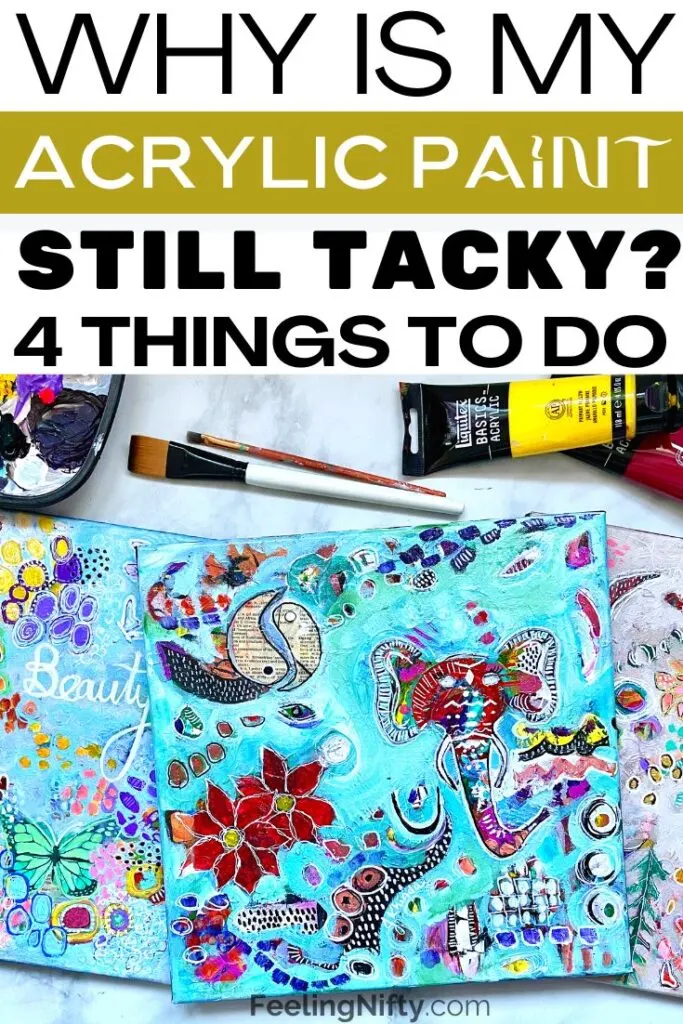
Why Is My Acrylic Paint Still Tacky?
To most artists or beginning painters, acrylic paint drying fast is the most common problem. People often ask how to keep their acrylic paint wet. Hence, it’s rare to find the paint taking too long to dry, leading to tackiness. However, that doesn’t mean that it’s not possible for this to occur..
Tackiness is an intermediary phase between wetness and dryness. At this point, the acrylic paint on your painting feels sticky. So, why is your acrylic paint still tacky?
Here are some causes of stickiness in acrylic paints:
High Humidity
Humidity (water vapor in the air) is an environmental factor that affects the paint’s drying process. As with other paints, high humidity makes acrylic paint dry slowly. Hence, if your studio’s (or working area) humidity is above 70%, your acrylic paint will take longer to dry. Working outside during warm summer months can also affect drying time.
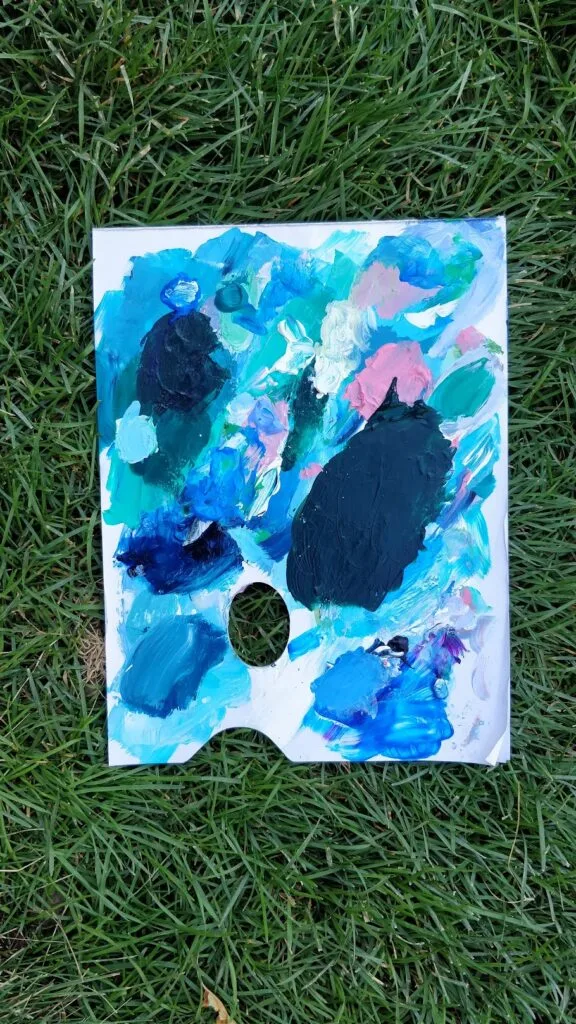
Now, how does high humidity retard acrylic paint’s drying process?
Acrylics are quick-drying paints consisting of a pigment suspended in acrylic polymer emulsion (and other ingredients). Since acrylics are water-soluble, you can dilute and clean them off using water. Moreover, the paint starts drying out when the water evaporates.
Here’s where high humidity comes in. If you’re working in a very humid environment, evaporation will be slower due to the high water vapor content in the air. Therefore, your acrylic paint will take longer to dry. While this may be a good thing for newbies (they take longer to paint), it’s frustrating if you want to complete the painting or if you’re working with multiple layers.
Low Temperature (Cold Environment)
Are you living in one of the cooler climatic areas? If your answer is yes, that could be the major reason why your acrylic paint is taking too long to dry. Painting during the cold seasons also results in the paint being tacky.
Like high humidity, low temperature slows down evaporation in paints. Therefore, acrylic paint will take longer to dry when it’s very cold. Most paints dry optimally between 70°F (21°C) and 90°F (32°C), and temperatures below that range will lead to a longer drying time.
Slow-Drying Acrylic Paint

Some painters prefer slow-drying acrylic paints as they provide a longer working time. That’s a good thing if you want to take breaks during painting, want extra time to blend your paints or store your paint for later use. However, using these paints is a disadvantage if you want your painting to dry quickly.
If you’re new to painting with acrylics, you may not be aware that some paints are specially designed to stay wet for longer. Maybe a friend or family member gifted you some acrylic paint tubes, and you didn’t bother getting more details about them. So, if you have acrylics, including Golden Open or Atelier Interactive Artist, these are some slow-drying paints.
Acrylic Paint Additives
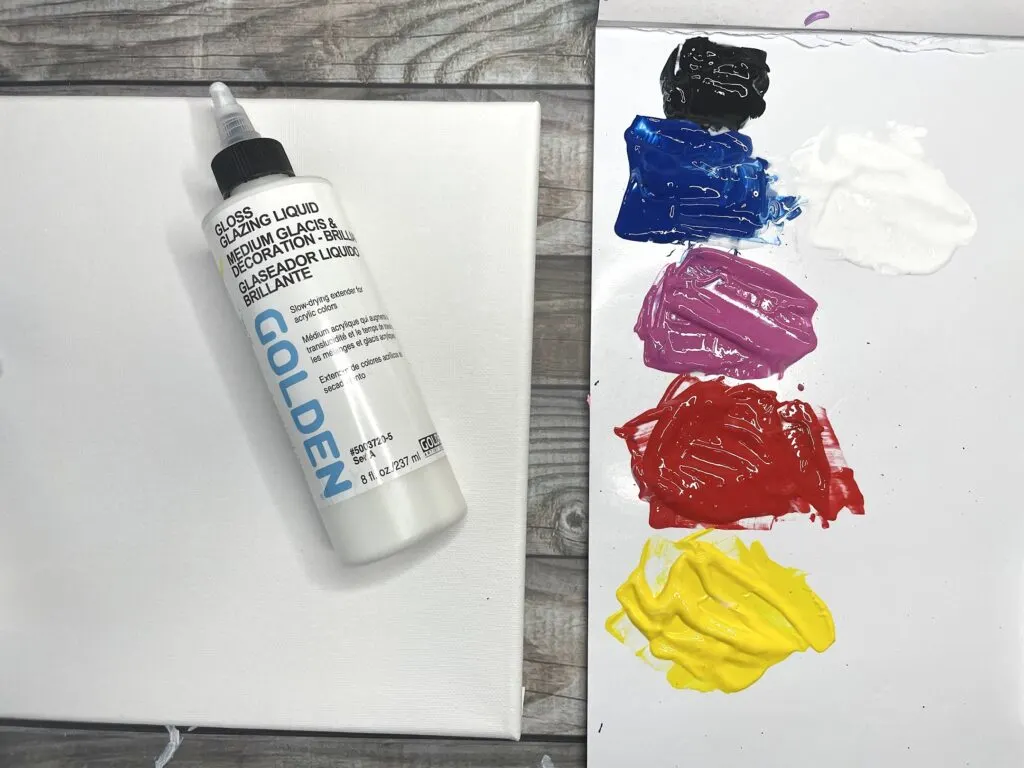
Another reason why your paint is still tacky is it may contain an additive. Additives are some products that you mix with your paint to prolong its wetness. If you didn’t add any to your acrylic paint, it could also mean that the paint itself already has an additive as one of the ingredients.
Though acrylics are water-based paints (water-soluble), you can also add other solvents to dilute them. These additives work by slowing down the polymerization or evaporation process, causing the paints to dry slowly. They’re often called acrylic paint mediums available as retarders, slow-drying mediums, or acrylic glazing liquids.
Let’s have a look at how each type of additive works:
- Retarders: They prolong an acrylic’s working time by approximately 10 to 15 minutes. So, they’ll help retain the paint’s wetness for longer and extend the tacky phase. Golden Paints Acrylic Retarder is one of the additives that most artists use to increase their paint’s working duration.
- Slow-drying mediums: As the name suggests, these products facilitate the paint’s slow-drying process. You may have noticed that some acrylics appear darker when dry than wet. Some painters use slow-drying mediums to minimize the color shift since most of these additives are clear. Another reason why painters use these mediums is that they maintain the paint’s fluid consistency (the medium-to-paint ratio is 1:1).
- Acrylic glazing liquids: These products prolong the acrylic paint’s drying time, and is my personal favorite medium to use. Acrylic glazing liquids work by holding a paint film, especially when applying several thin layers of paint. Hence, the additive will let your paint stay wet for longer. Glazing liquids also thin down thicker bodied acrylic paints so it becomes easier to apply to canvas. Many often come with different finishes like glossy, semi-gloss and matte – glossier sheens tend to make dried acrylics even more vibrant to boot!
Painting Surface
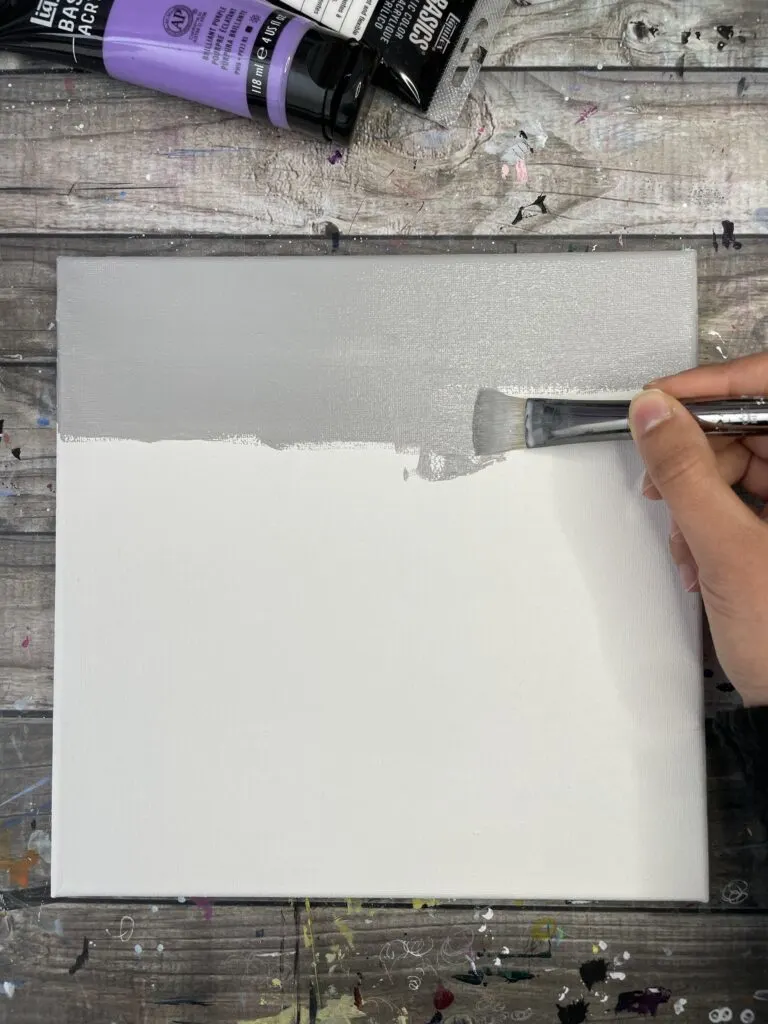
Your painting surface will also determine how fast (or slow) acrylic paint will take to dry. Since acrylic paints are versatile, you can use them on various surfaces, including canvas, paper, plastics, ceramic or rocks. Some surfaces allow the paint’s solvent to evaporate quickly, and the reverse is true for other surfaces.
Most artists use pre-primed canvas, a surface painted with gesso (acrylic base) as it provides a smooth painting area. Priming the canvas creates an adhesive painting area, allowing the paint to produce a fine texture and the brushes to glide smoothly.
Primed canvas, like the traditional absorbent gesso, is an effective painting surface. However, misting it at the back will convert it into a wet palette. Hence, when water starts evaporating from the front side of the canvas, the acrylic paint will draw some moisture from the wet surface (at the back).
If you dilute your acrylic paint at about 30 to 50% and use a less absorbent canvas board, the paint will take longer to dry. After applying the first layer, the paint appears to be in bead form, prolonging its drying process. Moreover, applying another layer to this will do no good as it disturbs the underlying layer.
Thin Over Thick Paint Layers

How have you been applying your acrylic paint layers? Thick paint layers take longer to dry than thin layers since water (or other solvents) will evaporate slowly on the former. So, if you’ve been painting thin layers over thicker ones, your paint may remain tacky and take ages to dry.
Sometimes you may also apply several thick layers of acrylic paint. A thick layer of acrylic paint may take a couple of minutes to dry. So, if you add another thick layer, you’ll impede the first layer from drying out.
It may seem like the top layer of paint has already dried, but it then feels squishy after you touch the painting. This means that the top paint layers have created a “blocking” effect where the underlying layers fail to dry as fast as they usually do.
4 Things To Do When Your Acrylic Paint Becomes Tacky
If you’ve finished painting or have just applied the first layer and your acrylic paint is still tacky, you may struggle to get the paint to dry. As frustrating as it is, there are a few ways to walk out of this issue.
Here are four things to do when your acrylic paint becomes tacky:
1. Monitor Your Room’s Humidity
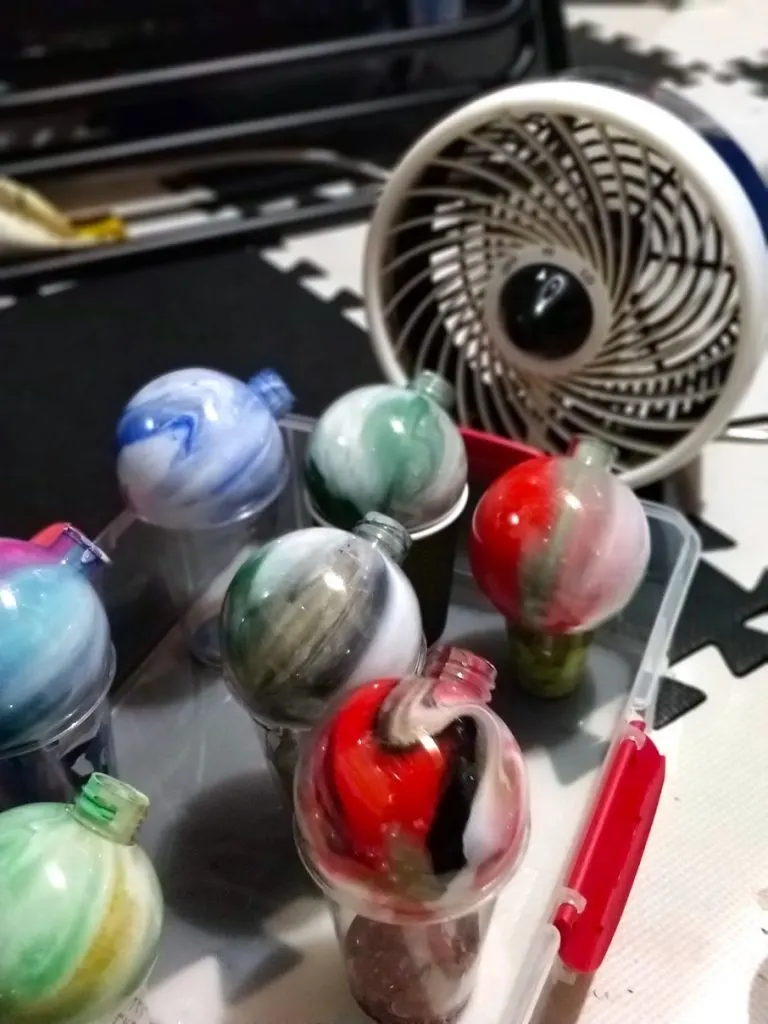
If you live in an area with high humidity, such as a coastal town, you can adjust your working area’s moisture content to speed up the paint’s drying process. However, you first require a gadget to monitor the room’s humidity.
High humidity is advantageous if you want to increase your paint’s working time by prolonging its drying time. However, if it leaves the paint tacky after you’re through with painting, it’s advisable to lower the room’s humidity or move to a less humid room.
Here are easy ways to lower your working area’s humidity:
- Switch on your air conditioner, fan, or a room heater. These appliances will remove the moisture in the air.
- Unclog the room’s air filters. It’ll help remove moisture and let clean air into your working area.
2. Move to a Warmer Room or Use a Heater
If you’ve been working in a cool room to prolong your acrylic paint’s drying time, it may result in the paint becoming tacky. Hence, moving to a warmer area will allow the paint to dry quickly.
But if it’s during the cold season, you can switch on your room heater to raise the area’s temperature. However, don’t overdo it as the paint will dry out unevenly.
3. Use a Hairdryer or a Heat Gun

Using a hairdryer is one of the easiest and most effective ways to get rid of acrylic paint tackiness. To dry the paint, switch on the hairdryer, hold it about six inches (15.24 cm) from the painting, and move it back and forth. But it may take longer to dry thick layers as they form some beads (or bubbles), only drying the upper surface.
One thing to note: the high temperature of a hairdryer might make your dried acrylic paint crack, reminiscent of a dry desert floor. That might work if you’re okay with that effect, but if you don’t want your paint to crack using a heat gun (below) is your best bet.
A heat gun’s nozzle is well attached, focusing the heat on the specific area that you want to dry. Like a hairdryer, hold the craft heat tool gun around six inches from the painting, and it will accelerate the drying process.
However, ensure that you apply the heat evenly for consistent drying and to avoid scorching your work. Focusing on one spot will also create some bubbles or cracks in your painting.
4. Wait for the Paint To Dry
Sometimes, there’s nothing much you can do to accelerate your acrylic paint’s drying process. If you’ve used slow-drying acrylic, some retarders, or additives, you just have to wait for the paint to dry slowly. Well, this may not be the best thing to hear if you’re in a hurry, but that could be the only solution.
Waiting also applies if you’ve applied several thick layers. But you can use the other quick fixes, including moving to a warmer room. However, it’ll take longer than if your painting has thinner layers.
How To Prevent Your Acrylic Paint From Becoming Tacky
Quick fixes may not always work. So, it would be better to prevent a problem than fix it. Here are ways to prevent your acrylic paint from becoming tacky:
Monitor Your Working Area’s Humidity and Temperature
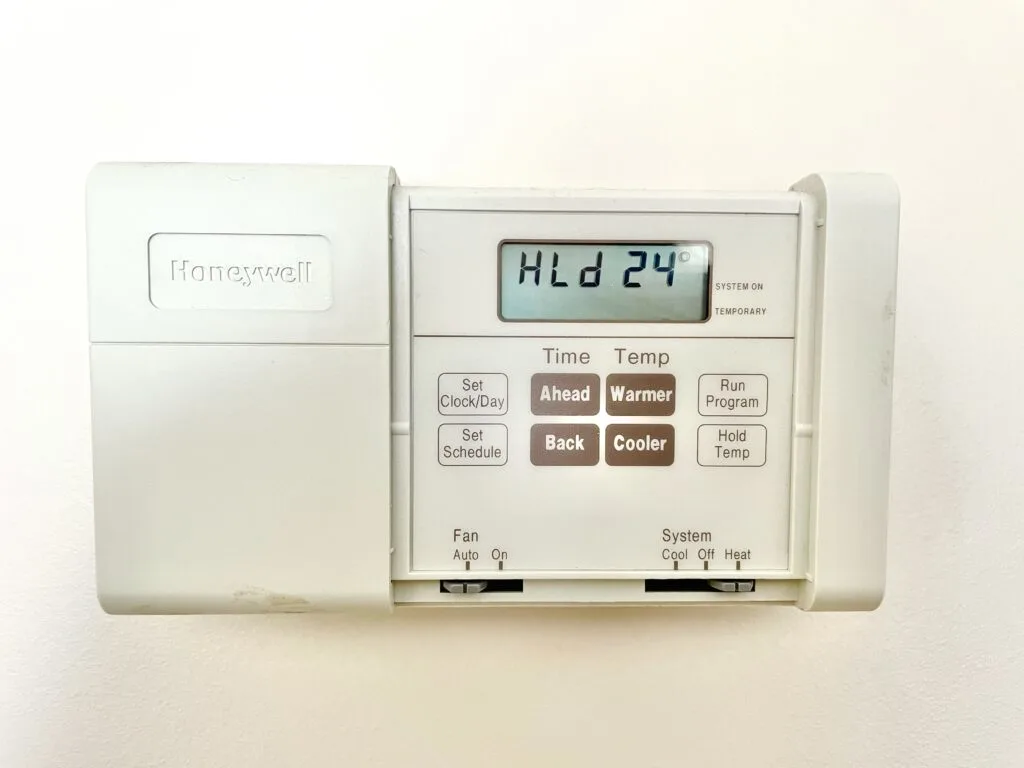
Before you start painting, always check your working area’s humidity and temperature. For most paints, the best working humidity is 40 to 70%. Also, room temperature (21-32°c/70-90°F) is the ideal temperature for acrylic painting. Therefore, if your room’s humidity and temperature are not optimum, regulate them before you begin painting.
Know the Paint’s Drying Time
Acrylic paints have different drying times. Knowing the expected drying duration of your paint will help you to choose the most appropriate one, based on your preferences. For instance, student-grade acrylic paints take about 10 to 15 minutes (for thin layers) and up to an hour for thicker layers.
Professional-grade acrylic paints have a drying time of approximately 20 to 30 minutes (for thin layers) and an hour or two if you’ve applied thick layers. Specialist acrylics dry in about 20 minutes if your working area’s temperature is 20°C (68°F). However, they can take longer to dry if you add water to them.
Go Slow on Additives/Retarders
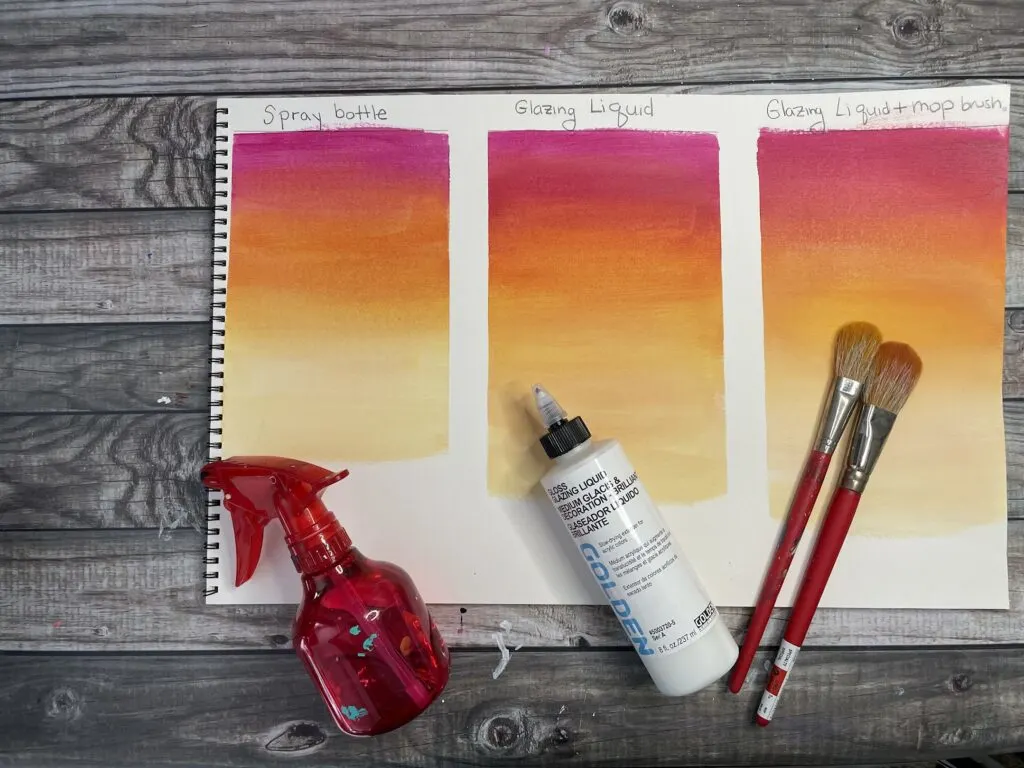
If you want your painting to dry as fast as possible, avoid adding any retarders or slow drying mediums to your acrylic paint. Hence, depending on the type of paint you’ve chosen, it’ll dry as per the brand’s specifications. Also, check the contents of the acrylic paint before buying to avoid getting the ones that already contain additives.
Seal Your Painting
Once your painting is fully dried, sealing your painting is a great way to create a glossy finish and protect it from environmental factors, such as UV light.
Check out this useful video on how to apply varnish to your painting:
Final Thoughts
Environmental factors are the most common causes of tackiness in acrylic paint. Monitoring and adjusting your environment may accelerate drying. However, prevention and knowing the properties of acrylic paints is always the best remedy.
If you liked this post please pin it

